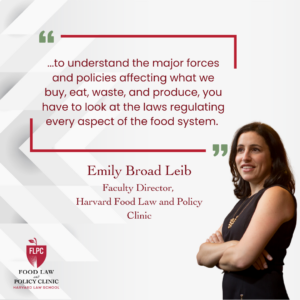When the Trump administration released its FY2019 budget, which included a plan to overhaul the Supplemental Nutrition Assistance Program (SNAP), outrage ensued.

 A standard box of USDA commodities at a food bank. Source: USDA
A standard box of USDA commodities at a food bank. Source: USDA
The proposal would replace half of SNAP recipients’ EBT benefits with cheap, non-perishable commodity provisions. Neither Democrats nor Republicans in Congress expressed support for America’s Harvest Box. Critics attacked the proposal as mean-spirited, infeasible, unhealthy, and bad for business. They likened it to an early iteration of the Food Distribution Program on Indian Reservations (FDPIR), to which some people attribute the staggering rates of obesity and Type 2 diabetes among American Indians and Alaska Natives. Politico reporter Helena Bottemiller Evich tweetedin search of supporting viewpoints, evidently unable to find any aside from Mick Mulvaney, Sonny Perdue, and a few USDA spokesmen.
Editorials bashing the Harvest Box rolled out of every major news publication, and panic over the backwards proposal dominated the food policy news cycle. This meant mission accomplished for the Trump administration and authors of the budget. As articulated by Senator Debbie Stabenow, ranking Democrat on the Senate Agriculture Committee, “This isn’t a serious proposal and is clearly meant to be a distraction.” While proposing $213.5 billion in cuts to SNAP over the next ten years (up from $192 billion in the FY2018 budget), they managed to include an even-more-alarming change that successfully deflected attention away from budget cuts– the true threat to SNAP.
“This isn’t a serious proposal and is clearly meant to be a distraction.” Senator Debbie Stabenow (D-MI)
SNAP is our nation’s foremost safety net for families struggling to make ends meet. The program helps feed over 42 million Americans each month, over half of whom are children or the elderly. It also serves as an economic stimulus, with $1.73 in economic gains for every $1 spent on SNAP. To cut funding to SNAP by any amount, let alone the 30 percent proposed in Trump’s budget, would mean some Americans would not receive the assistance they need to feed their families. This would lead tomore poverty, more food insecurity, and worse health outcomes.
If anything, SNAP could benefit from an increase in funding. A report released last month by the Urban Institute found that the current maximum per-meal SNAP benefit is not enough to cover the cost of a low-income meal, which averages $2.36 across the country. Additional SNAP funding could be used to increase the maximum benefit amount, for technological improvements to increase administrative efficiency, and for programs that incentivize and enable SNAP recipients to purchase healthier foods.
The Harvest Box proposal elicited a strong reaction from advocates, members of Congress, and the private sector alike. The energy behind this public consensus should be transferred back to the true issue at hand— budget cuts that threaten SNAP. A strong social safety net is critical to ensuring that all Americans can put enough food on the table, and to promoting resilience for families experiencing hard times. Cuts to SNAP would threaten the health and well-being of millions of low-income adults, children, and seniors, and should be opposed just as loudly as critics opposed the Harvest Box.


Health Law & Policy, Commentary
Braidwood Management v. Becerra: Updated FAQs for Health Advocates and Providers
July 22, 2024